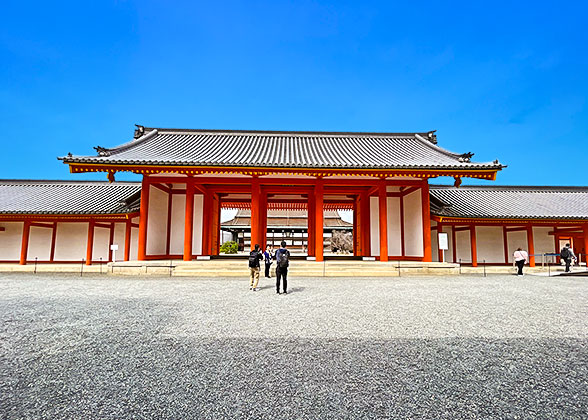Kyoto-gosho (Kyoto Imperial Palace)

Kyoto Imperial Palace Photos ( 19
|
Most Important Sites at the Imperial Palace
Shishinden, the Hall for State Ceremonies
Of all the constructions inside the Imperial Palace, Shishinden would be considered the most important as it’s the place where national ceremonies, including the enthronement ceremony, were held. Standing in the front of the gate are two trees: one cherry tree in the east and another an orange tree in the west - a common sight before imperial buildings.

Shinshinden hall, cherry tree (in the east), and orange tree (in the west)
|
Seiryoden and Otsunegoten, Where Emperors Resided
To the west of Shishinden sits the Seiryoden hall, which was the residence of emperors until 1590, when they began to officially reside at the Otsunegoten hall. For the next several centuries, Seiryoden remained the place for politic or religious events.Kogosho, the Court Room for Military Meetings
The Edo-era (1603 - 1868) saw the Kogosho hall serving as a gathering place for emperors, generals, and feudal lords to meet. It’s where the famous “Kogosho Conference” was held in 1868, which decided the fate of the Tokugawa family, the supreme military leader of Edo-era Japan, and thus played a big part of abolishing feudalism during the Meiji Restoration.

kogosho court room (front) and the library (back)
|
Imperial Gardens
Before Kogosho lies Oike-niwa garden (Imperial Pond Garden) and Gonai-tei garden (Imperial Inner Garden). Constructed for emperors, these classical gardens, with elaborately laid-out ponds, bridges and plants, are definitely worth a stroll.

Oike-niwa garden before Kogosho
|
The Lost Northeastern Corner
Zoom in the map of the Imperial Palace and you may find a corner that is different from the other three: it’s cut off. This actually has something to do with the Shinto religion, which believes the northeastern corner is the portal for demons to sneak in.
|
|
|
The Nearby Kyoto Sento Imperial Palace
The Sento Imperial Palace was built by Emperor Gomizunoo (r. 1611 - 1629) 400 years ago as his residence after retirement. Thanks to the emperor, his retired successors in the following centuries wouldn’t have to bother themselves about where to settle. After a destructive fire in 1864, all it encompassed were abandoned, except for a courtyard and a tea room.Know Before Going
Opening hours:October - March: 9:00 - 16:00 (Last entry: 15:20);
September and March: 9:00 - 16:30 (Last entry: 15:50);
April - August: 9:00 - 15:00 (Last entry: 16:20)
Closing days:
Mondays (Closed on the next day if Monday is a national holiday);
December 28 - January 4.
Entrance fee: Free; no need to reserve in advance
How to Get There (From Kyoto Station)?
Take Karasuma Subway Line and get off at Marutamachi Station, the closest station to the entrance of the Imperial Palace.
Nearby Attractions
Nijo Castle (1.4 km/0.9 mi away to the southwest, 20 min’s walk)The Nijo Castle was the temporary office of a shogun in Kyoto who kicked off the Edo era in Japan’s history to serve the Japanese emperor. Situated near the Imperial Palace, it's even more imposing and thus has an interesting story to tell. Nijo Castle is a UNESCO heritage site.
Kyoto Imperial Palace Photos & more Kyoto Photos